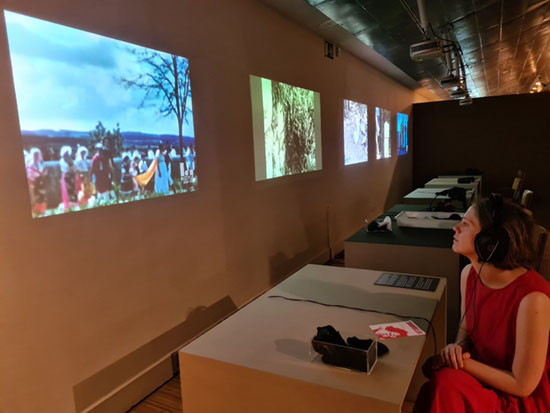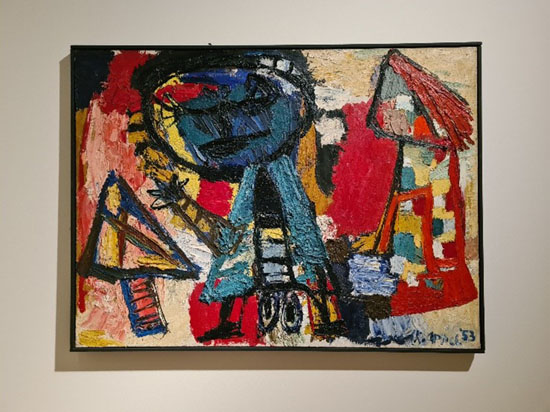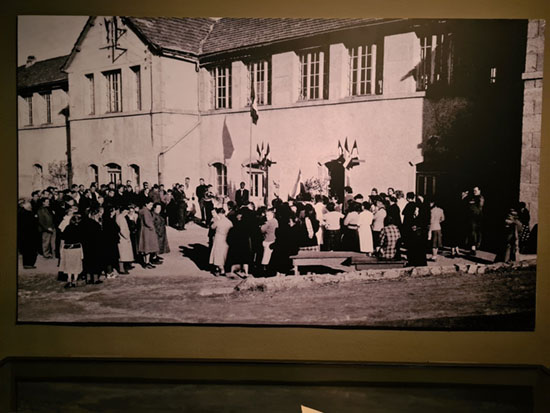Tosquelles, radical psychiatry and politics: A remarkable exhibition in Barcelona
DECOLMAD’s Ana Antic reports from an exhibition on the life and work of Francesc Tosquelles
In the spring and summer 2022, Centre de Cultura Contemporania de Barcelona (CCCB) is hosting a rich and informative exhibition on the psychiatric and political legacy of Francesc Tosquelles, Catalan-born psychiatrist and psychotherapist who contributed immensely to the transformation of psy disciplines and the development of French ‘radical psychiatry’ in mid-twentieth-century Europe.
In particular, his clinical explorations developed at the intersection of psychoanalysis, Marxism and revolutionary politics, and his experimental, cutting-edge research and practice ‘brought dignity to the lives of people who didn’t matter and had been abandoned to mental hospitals and asylums’, as the authors of the exhibition put it.


Tosquelles practiced psychotherapy in times of extreme political crises – he participated in the Spanish Civil War (as one of the founders of the anarchist POUM, he supported Republican war effort and organized psychiatric services on the Aragon front and in Extremadura), then fled to France in 1939. Following a stay at the Septfonds concentration camp, he began his revolutionary work at the psychiatric hospital in Saint-Alban-sur-Limagnole in 1940. There, he set the foundations of institutional psychotherapy – a philosophy and set of clinical practices inspired by Marxism and psychoanalysis, which focused on reforming the nature of and social relations within mental health institutions in order to prevent ‘concentrationism’, a tendency of all institutions to grow increasingly authoritarian, oppressive and discriminatory. His work was thus based on his life-long belief that it was psychiatric institutions (as well as doctors) that needed to be healed before they could help patients. At Saint-Alban, Tosquelles and his collaborators experimented creatively with different kinds of therapeutic communities, which involved artists, doctors, nuns and nurses in addition to inpatients.

In order to humanize his patients’ experiences within mental health institutions, he introduced a variety of pioneering activities for inmates – such as creative writing, film and theatre workshops; production of wall magazines and newspapers; sport events; cultural excursions; parties and different forms of patients’ clubs – and insisted on practices of self-management. As part of the radical restructuring of psychiatric institutions, patients needed to take part in running hospitals and asylums. Tosquelles and his team aimed to involve patients in different aspects of decision-making within the institution, and to develop new forms of communication which would undermine traditional hierarchical relationships. In the exhibition, these activities are presented through a variety of original documents, film reels, and interviews with Tosquelles himself.


In Saint-Alban, Tosquelles combined clinical work, creative artistic practice and anti-fascist political activities (particularly during the war and the occupation of France, when his hospital became a safe harbor for anti-fascist artists and thinkers). The exhibition explores different forms of artistic production within the hospital, and dedicates a lot of attention to art created by inmates.


It is important to note that Tosquelles’ work had a powerful influence on Frantz Fanon, who worked under his supervision in Saint-Alban from April 1952 until August 1953. The exhibition dedicates very little space to this historic encounter, but, as historian Camille Robcis has argued, Tosquelles might have been one of Fanon’s most significant intellectual mentors. Institutional psychiatry resonated with Fanon’s concerns, primarily because of its radical institutional critique and because of its explicit linking of politics and psychiatry. In many ways, this was bound to be a very productive meeting of minds. Well before he met Fanon, Tosquelles viewed himself as someone who primarily fought different forms of political occupation and colonization – as a Catalan in Spain, as a Republican during the Spanish Civil War, as an anti-fascist and resistante in Vichy France. Fanon was a very active participant in the revolutionary clinical practice at Saint-Alban during his fifteen months there, and when he moved to the Algerian Blida-Joinville hospital in 1953, he attempted to recreate many of institutional psychiatry’s experiments in North Africa. He faced many obstacles and experienced intense frustration as he tried to apply the Western framework of institutional psychiatry to his North African patients, and his efforts to rethink these connections and decolonize institutional psychiatry are explored in Camille Robcis’ recent book Disalienation: Politics, Philosophy, and Radical Psychiatry in Postwar France (University of Chicago Press, 2021; particularly chapter 2).

After the Centre de Cultura Contemporània de Barcelona (8 April–28 August 2022), the exhibition will be hosted at the Museo Nacional Centro de Arte Reina Sofía, Madrid (27 September 2022 – 31 March 2023), and the American Folk Art Museum in New York (April–October 2023).
